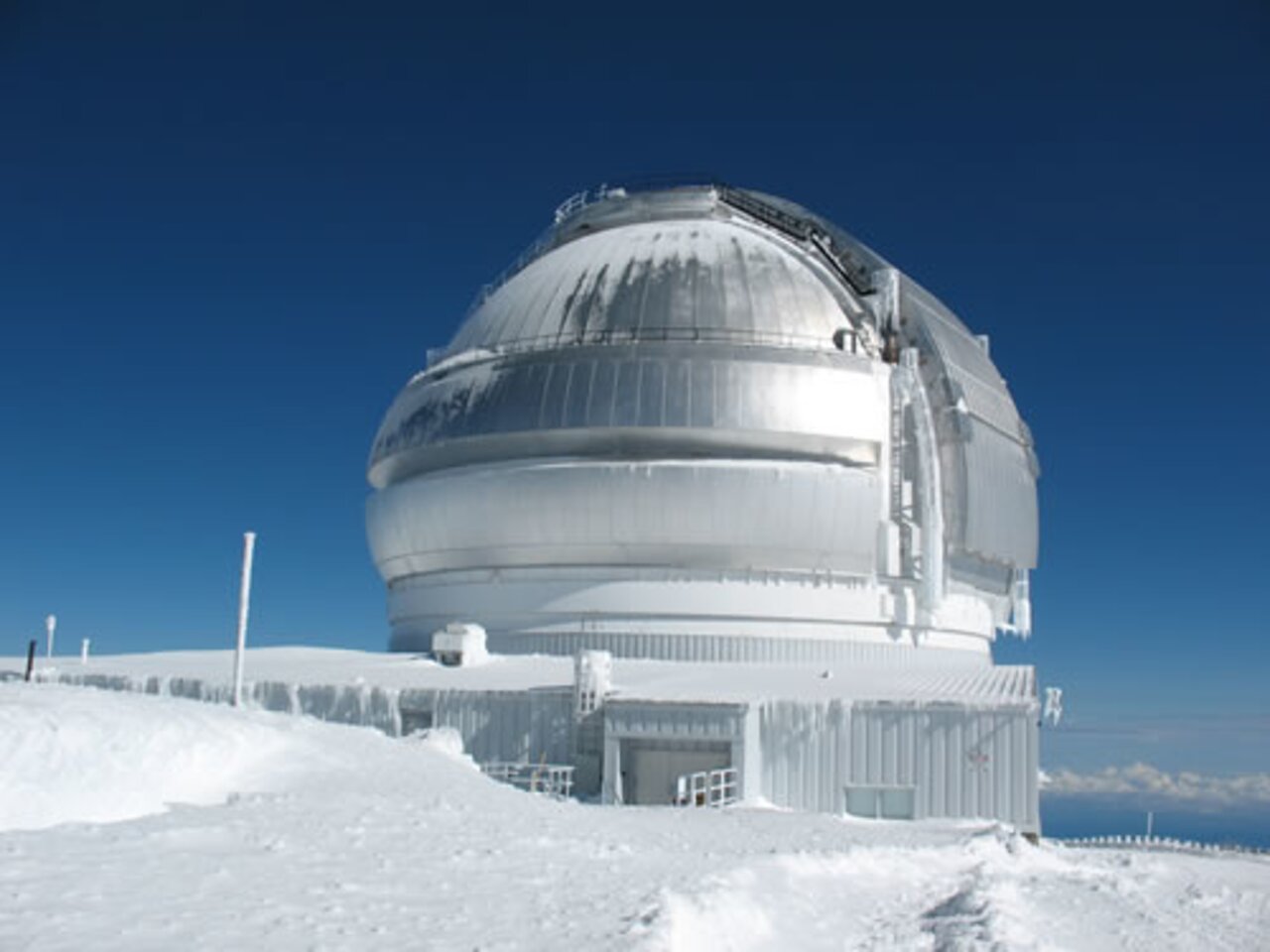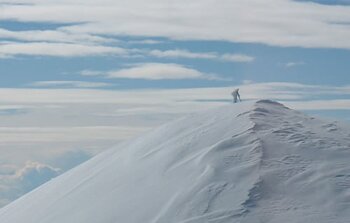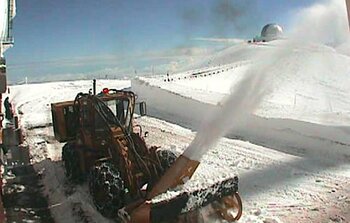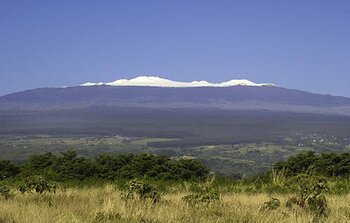Mauna Kea Experiences Extended Severe Weather "Event"
February 7, 2008

Since the last week of January, the weather atop Mauna Kea has been, “atrocious” in the words of Gemini North’s Head of Science Operations Inger Jørgensen. “Since the night starting on January 28th we have been on the sky only once for a total of 2.3 hours!” she reports.
As of February 7th, the snow and ice on Mauna Kea continue to plague the summit area and crews have been working almost continuously to keep the observatories accessible for optimistic night-crews. Ron Koehler of Mauna Kea Support Services said, “This winter has really worn out the road crew. They have been working 7 days a week to open the roads to the observatories only to be faced with the same view of a snow covered road the next day. It is a nightmare for them facing a deja vu on top of deja vu!”
Meanwhile, below in Hilo (and much of Hawai‘i), the rains have been extremely heavy. One area of the Big Island received over 46” of rain in a 72 hour period and extended periods of lightning and thunder have been common throughout the state. The system that created this situation consists of two troughs of low pressure at each end of the island chain that have remained quasi-stationary for an extended period and have been responsible for pumping nearly continuous moisture over Hawai‘i from the south.
“Obviously when we get a situation like this the observing queue becomes as stationary as this weather pattern,” said Jørgensen who is the primary staff-person responsible for queue scheduling at Gemini North.
“This winter has been especially stormy on Mauna Kea and we’ve had an especially high number of unusable nights so far,” said Gemini’s Head of Science Jean-Rene Roy. Previous snowfall and cloudy weather during the 2007-8 winter have proven to be a challenge this year for all of the Mauna Kea observatories.



